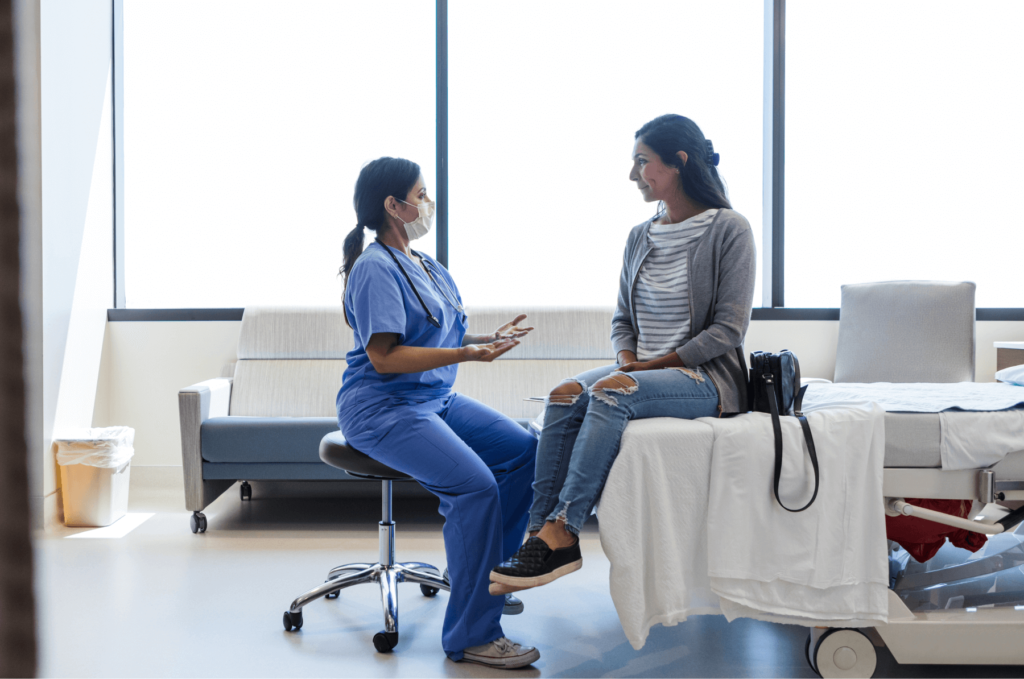Common Gynecological Conditions: Understanding Women’s Health
Gynecological health is a cornerstone of women’s overall well-being, encompassing a range of conditions that can affect the reproductive system. Understanding these conditions is crucial for early diagnosis, effective treatment, and maintaining optimal health. This article will explore some of the most common gynecological conditions, their symptoms, causes, and available treatments.
1. Menstrual Disorders
Menstrual disorders are among the most common gynecological issues women face. These disorders can significantly impact a woman’s quality of life and may include the following:
- Dysmenorrhea: Painful periods characterized by severe cramps, nausea, vomiting, and headaches. It can be primary (not related to other conditions) or secondary, often linked to conditions like endometriosis or fibroids.
- Menorrhagia: Excessive menstrual bleeding, defined as losing more than 80 mL of blood per cycle or periods lasting longer than seven days. Menorrhagia can be caused by hormonal imbalances, uterine fibroids, or bleeding disorders.
- Oligomenorrhea: Infrequent menstrual periods, typically occurring more than 35 days apart. Causes include polycystic ovary syndrome (PCOS), thyroid disorders, or excessive exercise.
- Amenorrhea: The absence of menstruation, which can be primary (failure to start menstruating by age 15) or secondary (cessation of periods in a woman who previously menstruated). Pregnancy, stress, and significant weight loss are common causes.
2. Polycystic Ovary Syndrome (PCOS)
PCOS is a hormonal disorder that affects approximately 1 in 10 women of reproductive age. It is characterized by:
- Irregular Menstrual Cycles: Women with PCOS often experience fewer periods (oligomenorrhea) or no periods at all (amenorrhea).
- Hyperandrogenism: Elevated levels of male hormones, leading to symptoms like hirsutism (excessive hair growth), acne, and male-pattern baldness.
- Polycystic Ovaries: Ovaries become enlarged and contain multiple small cysts.
PCOS can also lead to insulin resistance, increasing the risk of type 2 diabetes, obesity, and cardiovascular disease. Management includes lifestyle changes, hormonal therapy, and medications like metformin.

3. Endometriosis
Endometriosis is a chronic condition where tissue similar to the uterine lining (endometrium) grows outside the uterus. This tissue can implant on the ovaries, fallopian tubes, and other pelvic structures, leading to:
- Chronic Pelvic Pain: Often severe and worsening during menstruation.
- Pain During Intercourse: Known as dyspareunia.
- Infertility: Up to 30-50% of women with endometriosis may experience difficulty conceiving.
The exact cause of endometriosis is unclear, but it may involve genetic, hormonal, and immune system factors. Treatment includes pain management, hormonal therapies, and surgical options like laparoscopy.
4. Uterine Fibroids
Uterine fibroids are non-cancerous growths that develop in or on the uterus. They are most common in women of childbearing age, particularly those of African descent. Symptoms vary depending on the size and location of the fibroids and may include:
- Heavy Menstrual Bleeding: Leading to anemia in severe cases.
- Pelvic Pain and Pressure: Caused by large fibroids pressing on nearby organs.
- Reproductive Issues: Fibroids can cause infertility, recurrent miscarriages, and complications during pregnancy.
Treatment options range from watchful waiting for asymptomatic fibroids to medications, minimally invasive procedures (like uterine artery embolization), and surgical interventions (such as myomectomy or hysterectomy).
5. Pelvic Inflammatory Disease (PID)
PID is an infection of the female reproductive organs, often caused by sexually transmitted infections (STIs) like chlamydia and gonorrhea. If untreated, PID can lead to:
- Chronic Pelvic Pain: Persistent discomfort in the lower abdomen.
- Infertility: Scarring and blockages in the fallopian tubes can prevent pregnancy.
- Ectopic Pregnancy: Increased risk due to damaged fallopian tubes.
Symptoms include lower abdominal pain, abnormal vaginal discharge, fever, and pain during intercourse. Early treatment with antibiotics is essential to prevent long-term complications.
6. Vaginitis
Vaginitis refers to inflammation or infection of the vagina, which can be caused by bacteria, yeast, or irritants. Common types include:
- Bacterial Vaginosis (BV): An overgrowth of harmful bacteria, leading to a thin, grayish discharge with a fishy odor. BV is linked to an increased risk of STIs and preterm birth.
- Yeast Infection: Caused by an overgrowth of Candida, resulting in thick, white discharge, itching, and burning. Risk factors include antibiotic use, pregnancy, and diabetes.
- Trichomoniasis: A sexually transmitted infection caused by the parasite Trichomonas vaginalis, leading to frothy, yellow-green discharge, itching, and discomfort.
Treatment depends on the cause and may include antibiotics, antifungal medications, or lifestyle changes.
7. Ovarian Cysts
Ovarian cysts are fluid-filled sacs that develop on the ovaries. While many cysts are benign and asymptomatic, some can cause:
- Pelvic Pain: Particularly if the cyst ruptures or becomes large.
- Menstrual Irregularities: Depending on the type of cyst.
- Bloating and Fullness: A feeling of heaviness in the abdomen.
Functional cysts, related to the menstrual cycle, often resolve on their own, while other types, like dermoid cysts or endometriomas, may require surgical removal.

8. Cervical Dysplasia and Cervical Cancer
Cervical dysplasia refers to abnormal changes in the cells on the surface of the cervix, often caused by the human papillomavirus (HPV). While cervical dysplasia is not cancer, it can progress to cervical cancer if left untreated. Key points include:
- HPV Infection: The most common cause of cervical dysplasia and cervical cancer.
- Screening: Regular Pap smears and HPV tests are crucial for early detection.
- Treatment: Cervical dysplasia may be treated with procedures like cryotherapy, laser therapy, or loop electrosurgical excision procedure (LEEP), while cervical cancer may require surgery, radiation, and chemotherapy.
9. Menopause and Perimenopause
Menopause marks the end of a woman’s reproductive years, defined as 12 consecutive months without a menstrual period. Perimenopause is the transitional period leading up to menopause, characterized by:
- Irregular Periods: Cycles may become shorter, longer, heavier, or lighter.
- Hot Flashes and Night Sweats: Sudden feelings of heat, often with sweating and flushing.
- Mood Changes: Including irritability, depression, and anxiety.
- Vaginal Dryness: Due to decreased estrogen levels, leading to discomfort during intercourse.
Hormone replacement therapy (HRT), lifestyle changes, and non-hormonal medications can help manage symptoms.
10. Sexually Transmitted Infections (STIs)
STIs are infections transmitted through sexual contact, with common examples including chlamydia, gonorrhea, syphilis, and herpes. STIs can lead to:
- Reproductive Health Issues: Such as PID, infertility, and chronic pain.
- Pregnancy Complications: Including premature birth, stillbirth, and congenital infections.
- Systemic Effects: Some STIs, like HIV, can affect the entire body.
Prevention through safe sex practices, regular screening, and prompt treatment with antibiotics or antiviral medications is crucial for managing STIs.
Conclusion
Understanding common gynecological conditions is vital for women’s health, enabling early detection and appropriate treatment. Regular gynecological check-ups, awareness of symptoms, and proactive management are key to maintaining reproductive health and overall well-being. Women should feel empowered to seek medical advice and care for any concerns related to their gynecological health, ensuring a healthy and fulfilling life.







